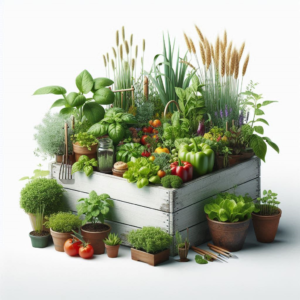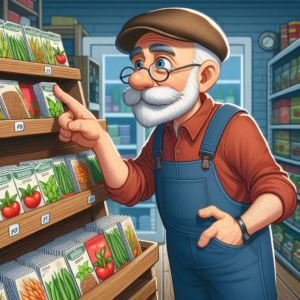 The term Urban Gardening refers to the practice of growing crops in cities or suburbs and even in a rural setting. Urban gardening is anywhere that space constraints force creative gardening solutions.
The term Urban Gardening refers to the practice of growing crops in cities or suburbs and even in a rural setting. Urban gardening is anywhere that space constraints force creative gardening solutions.
The benefits of urban gardening are many including environmental sustainability and access to fresh produce. Urban gardening also provides visual appeal by beautifying the urban spaces.
Urban gardening and traditional gardening are different in some important ways, mainly due to limited gardening space availability. This often necessitates growing your plants in containers or raised beds. This poses some challenges not commonly seen with traditional gardening methods.
Urban gardeners have learned and have adapted their skills at making the most of their small space gardens, turning the chosen area into a mini oasis. Whether it’s a rooftop or a balcony or only a small patch of land, you can transform your space into something to be proud of.
Container gardening is the signature practice for urban gardening. A large variety of fruits, vegetables, or even flowers can be grown in small space using this method.
Plant selection for the urban gardener is a big must. Do a little research to find the crops that are known to thrive in containers. The plants you choose should require very little maintenance and be able to cope well in the urban environment. Your chosen plants should be able to thrive with limited sun exposure and the inevitable pollution that accompanies urban living.
Climate is also essential in plant selection. To ensure the success of your growing efforts a little research goes a long way towards plant selection, look for those plants best suited to your climate. Plants that thrive in the hotter and/or more humid climates might not do so well in the temperate regions and all require care and attention specific to the climate they are growing in to ensure optimal growth and productivity. While some plants prefer the full sun, others do better in the shade.
Look up the frost dates and typical temperature fluctuations in your area. This is important when determining the appropriate time to plant.
Setting up your garden maintenance schedule, taking into account the seasonal changes and possible harsh weather conditions will help protect your plants, keeping them healthy and resilient.
Proper mulching and composting, proper watering, and the use of a climate friendly cultivation method will go a long way towards the success of your urban gardening endeavors.
CROP SELECTION
Leafy greens, root vegetables, microgreens and most herbs all do well in containers.
Leafy greens include spinach, kale, cabbage, lettuce and collard greens to name a few. Their versatility and high nutrient content make leafy greens a popular and healthy choice for urban gardens.
Root vegetables
Root vegetables that do well in containers include radishes, carrots, beets, onions, turnips, ginger, turmeric and garlic.
Many more root vegetables do well in containers, and all provide you with healthy and beneficial nutrients, vitamins and minerals
Microgreens
Microgreens include arugula, radish, beet greens, pea shoots, basil, kale, lettuce, cabbage and many, many more. Microgreens are vegetables or herb seedlings which are harvested after the first set of true leaves has emerged, when they have grown only a few inches tall.
Microgreens can be grown year-round indoors or outdoors depending on the climate and your preference.
Microgreens are loaded with antioxidants, vitamins, and minerals. A very popular choice for the health conscious.
Herbs
Herbs that thrive in a container include basil, chives and garlic chives, cilantro, parsley, mint, and thyme. Many herbs do well in containers. A tasty and healthy crop choice no matter what.
As always when selecting crop varieties, consider factors such as your local climate, sunlight availability, and proper watering to ensure a successful urban garden. Use the proper soil and nutrients for each specific plant you plan on growing. Mulching is always a good practice also.
Stay healthy and happy gardening!!!



